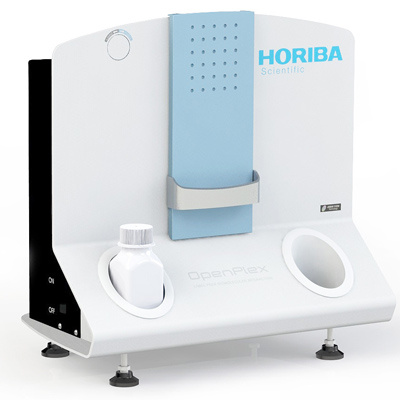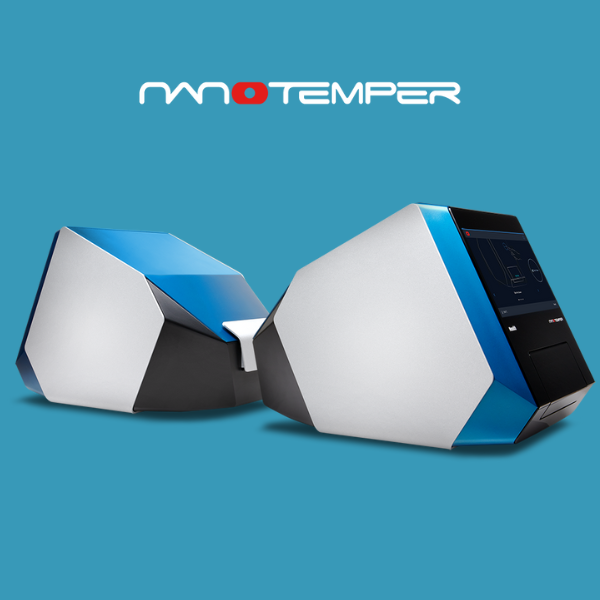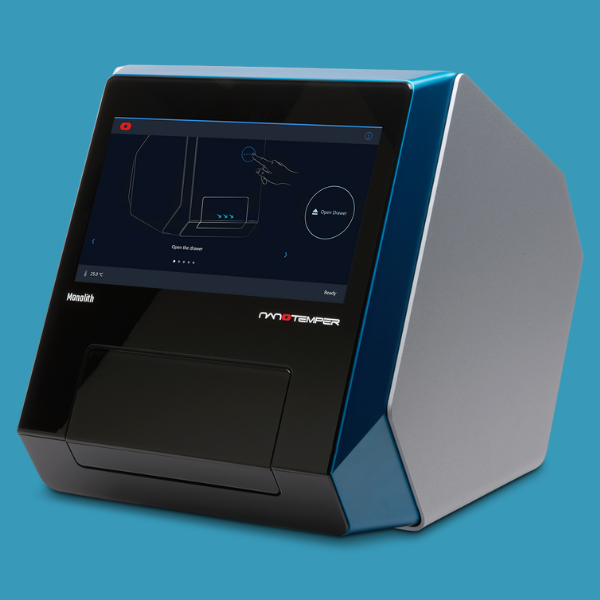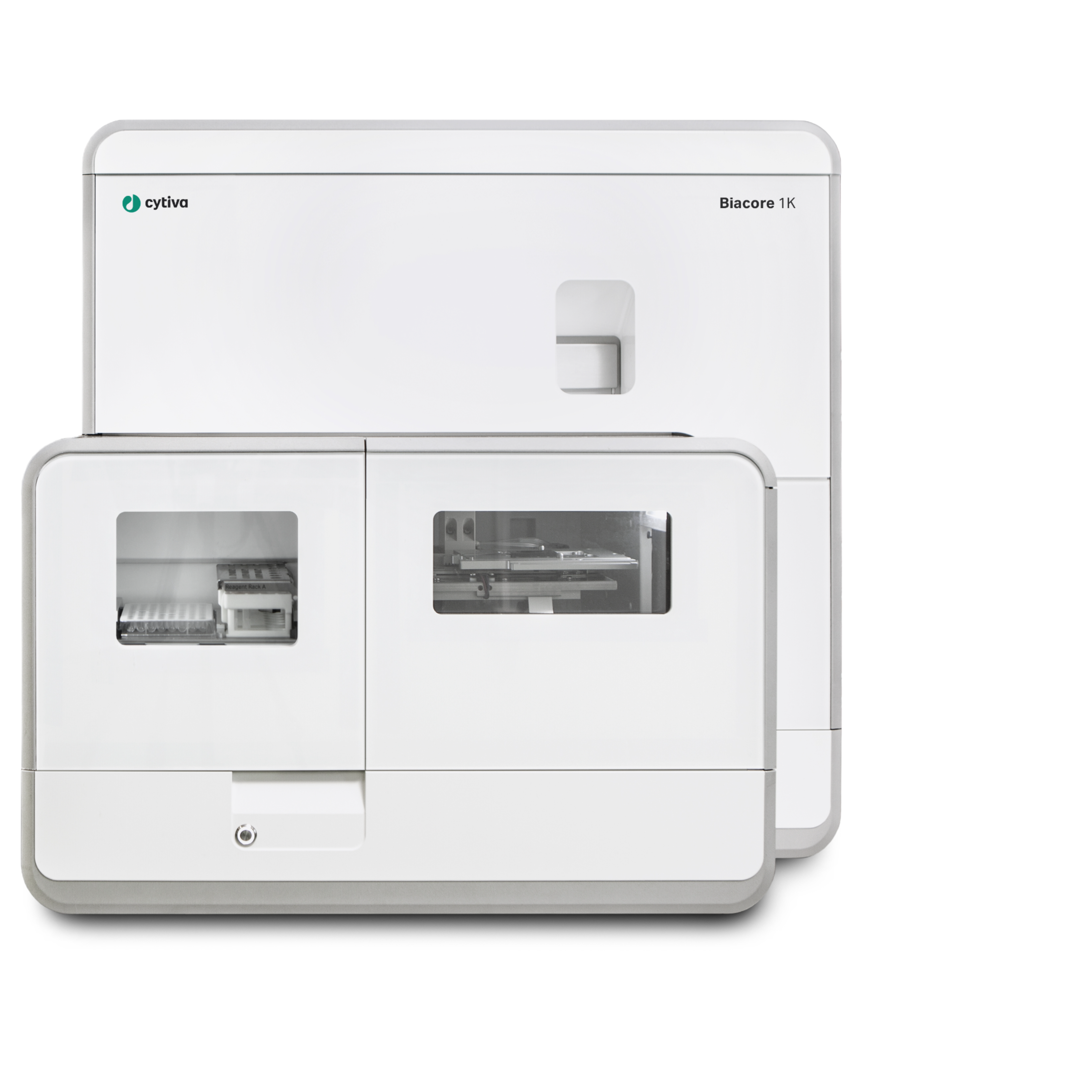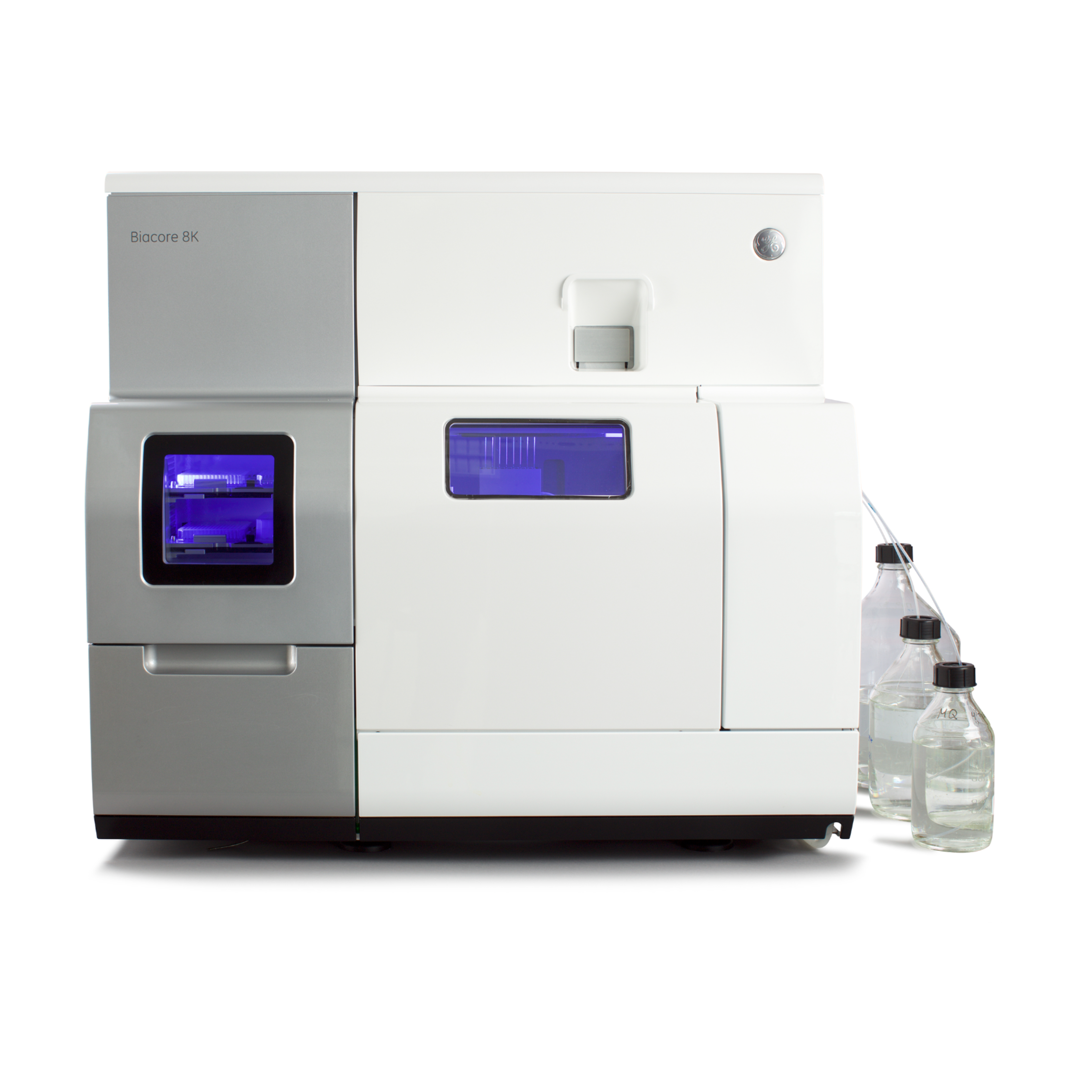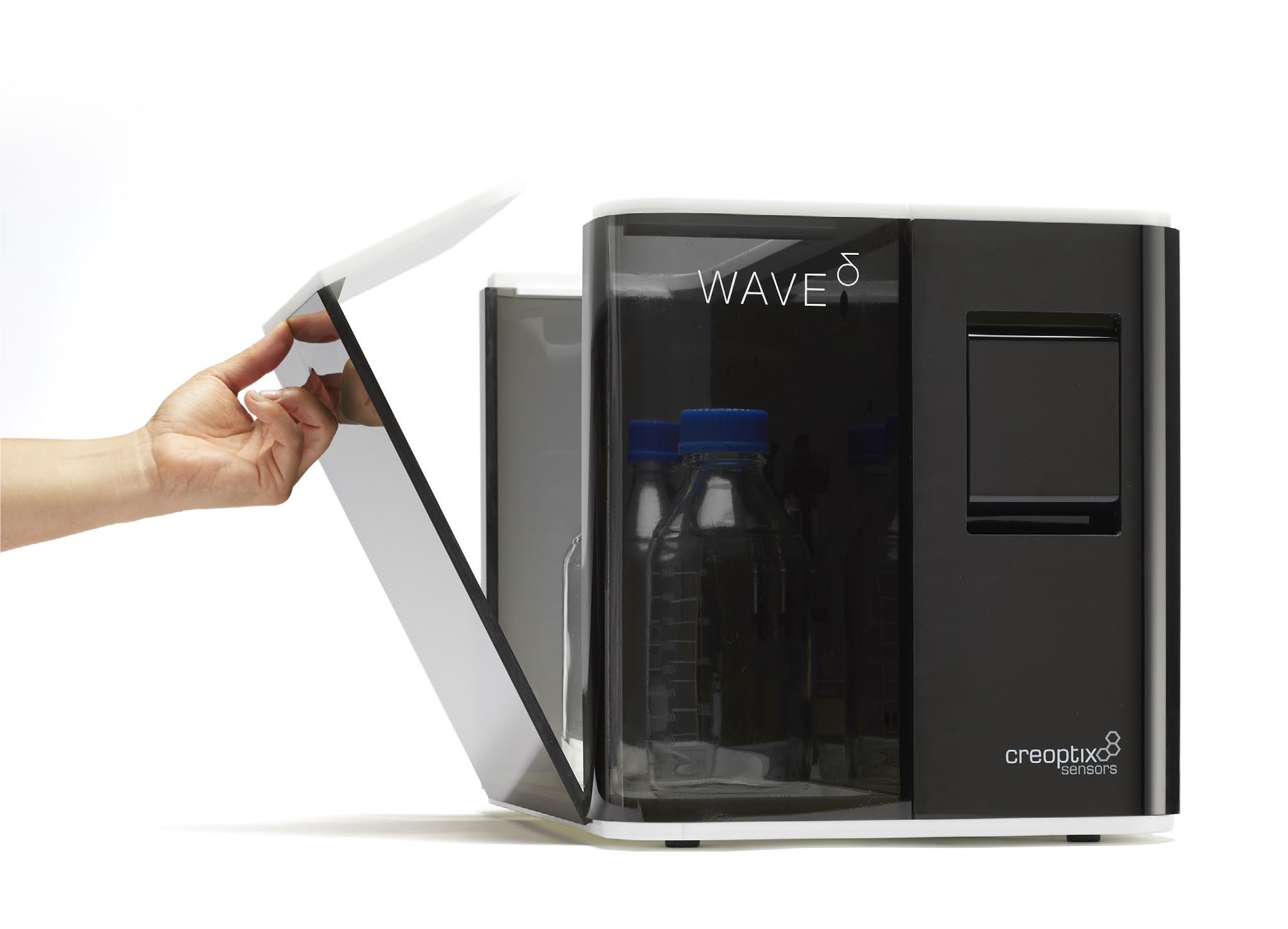方案详情
文
We demonstrate here the robustness of our diazonium-ani-line-protein derivatives Biochip. We performed 112 ovalbumin injections each followed by injection of regeneration buffer (Glycine/HCl). After more than one hundred regenerations, the biochip remains active as indicated in figure 3..
方案详情

SPRj & Life SciencesApplication Note SPRi-0809.10-v1.1- Page 2 HORIBA SPRi & Life SciencesScientific The increased demand for hundreds of successive interaction-regeneration steps within theprocess of measuring biological interactions by SPRi technology (Surface PlasmonResonance imaging) has led Genoptics to develop new surface chemistries. One of thesurface chemistries developed consists of the formation of a cystamine/glutaraldehyde layeron the biochip surface on which receptors can be directly spotted before introduction of thechip into the SPRi system. Using this surface chemistry for receptor immobilization we areable to show that more than one hundred regenerations are tolerated without loss of activity.The biological interaction chosen to illustrate this is the anti-ovalbumin/ovalbumin model. Materials and methods Preparationof theCystamine/Glutaraldehydelayers Firstly, the biochip surface was cleaned by UV-Ozone for onehour. Immediately after, the biochips were quickly immersed ina 25 mM cystamine/ 90% ethanol solution for 2 hours with agi-tation. The biochip was washed for 5 minutes with a 90%ethanol solution, dried, then rinsed for 5 minutes with a 10 mMPBS solution and dried again. Finally, the biochip was dippedinto a 2.5% glutaraldehyde/10 mM PBS solution for one hourwith agitation, then rinsed with a PBS solution and dried. Immobilization of antibodies The immobilization step was performed by an SPRi ArrayerTMdirectly on the functionalized biochip surface before introducingthe chip into the SPRi system. IFigure 1: Image of the biochip The spotting solution (10mM PBS solution with 10% glyce-rol) contained 6.7 pM anti-ovalbumine antibodies. Thenegative control solution contained 6.7 uM mouse lgG andthe tip was rinsed with distilled water after each spotting. Seventy anti-ovalbumin and twenty three mouse lgG spotswere grafted onto the biochip. Injected solutions Ovalbumin diluted at 20 pg/mL in the running buffer (10 mMPBS) and 100 mM glycine / HCI pH=2.0 were alternativelyinjected up to 112 times on the flow cell system. The inter-action/regeneration steps could then be monitored in realtime without labeling. SPRi experiment initialisation The biochip surface without antibody immobilization wasblocked by the injection of a 10 mM glycine/ 10 mM PBSsolution and rinsed with 10 mM PBS. The non specific siteswere saturated with injection of a 1% BSA solution. Results and discussion SPRi quantification of protein binding on thebiochip The injections were carried out automatically. Specific interactions were observed between ovalbumin andits complementary antibody whereas only background levelswere detected on the mouse lgG spots. The amount of ovalbumin bound onto anti-ovalbumin spotswas constant. These data indicated an out-and-out regenera-tion as the signal returned to the previous baseline (figure 2). Figure 3 represents the amount of ovalbumin on the anti-ovalbumin antibodies. Each injection of ovalbumin wasregenerated with glycine/HCl. We demonstrate here the robustness of our system. We per-formed 112 ovalbumin injections each followed by injectionof regeneration buffer (Glycine/HCl). After more than one hun-dred regenerations, the biochip remains active as indicated infigure 3.After 111 regenerations cycles, the interaction signal varied by only±4% Antibody-protein interactions on biochips functionalized with aCystamine/Glutaraldehyde layer will tolerate more than onehundred regenerations without loss of activity. Figure 2: A series of antibody-antigen interaction curves after subtraction of the negative control France:+33 (0)164 54 13 00 Germany: +49 (0)89 46 23 17-0Italy: +39 0257 60 30 50 Japan: +81 (0)3 3861 8231Other Countries: +33 (0)1 64541300 HORIBAExplore the futureAutomotive Test Systems Process & Environmental Medical Semiconductor ll Scientific We demonstrate here the robustness of our diazonium-ani-line-protein derivatives Biochip. We performed 112 ovalbumin injections each followed by injection of regeneration buffer (Glycine/HCl). After more than one hundred regenerations, the biochip remains active as indicated in figure 3..
确定


还剩1页未读,是否继续阅读?
HORIBA(中国)为您提供《卵清蛋白,抗体,生物芯片中鲁棒性,相互作用检测方案(大分子作用仪)》,该方案主要用于其他中鲁棒性,相互作用检测,参考标准--,《卵清蛋白,抗体,生物芯片中鲁棒性,相互作用检测方案(大分子作用仪)》用到的仪器有HORIBA OpenPlex表面等离子体共振成像仪
推荐专场
相关方案
更多
该厂商其他方案
更多

